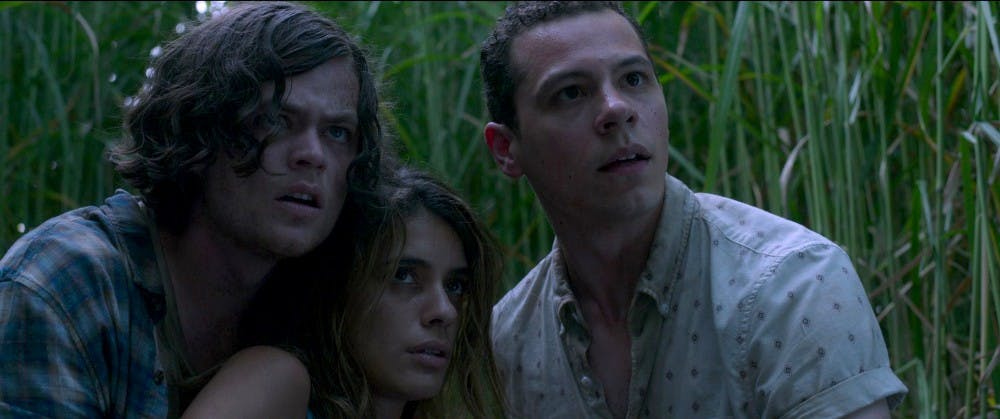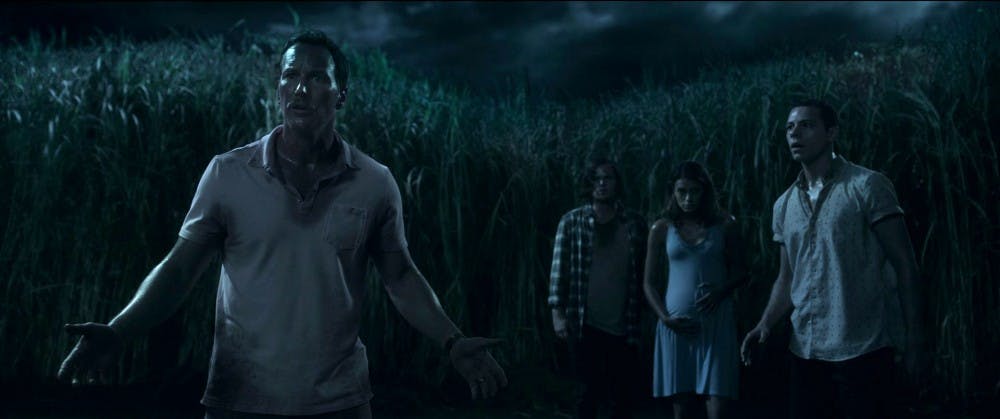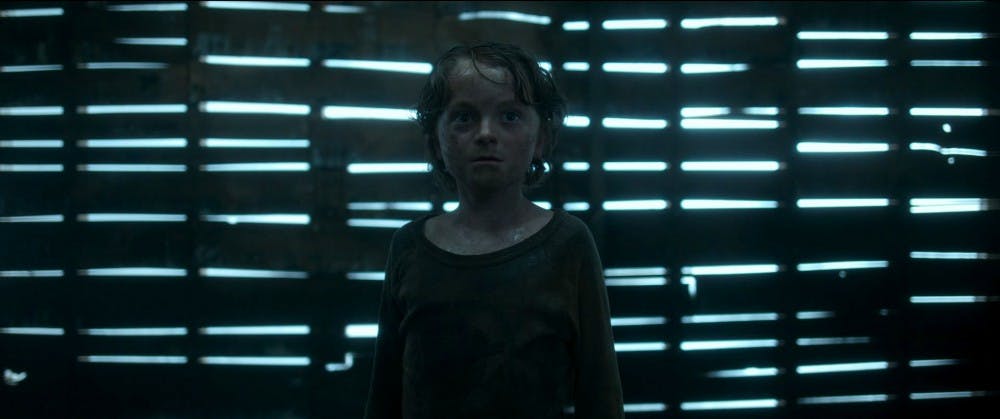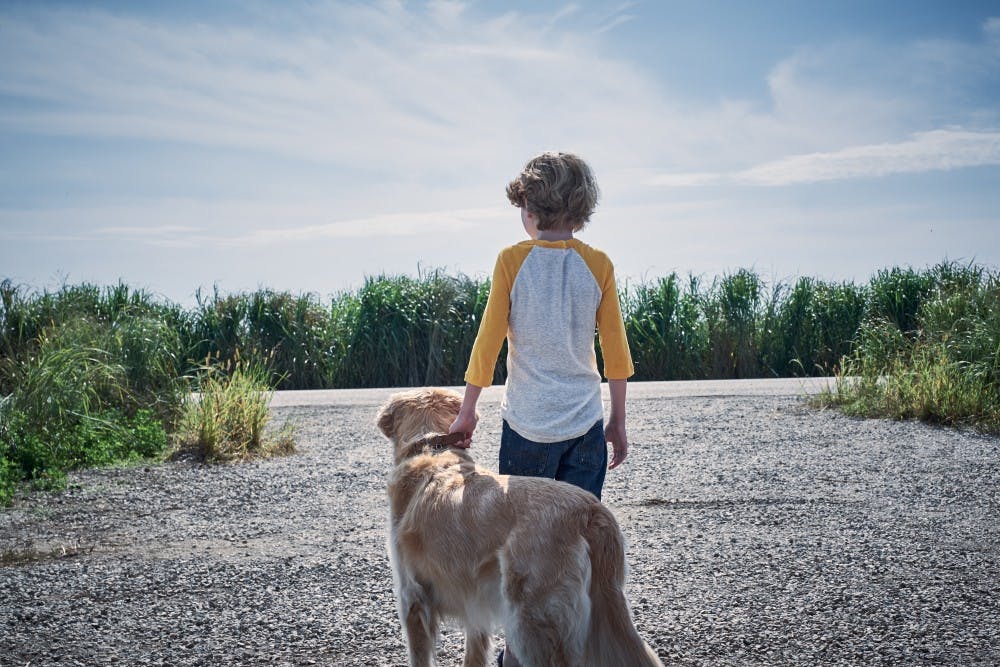Last week, Netflix hit off their “Netflix and Chills” series with a flawed, but entertaining thriller: In the Shadow of the Moon. This week, Netflix’s grasp on “chills” continues to tighten with its release of In the Tall Grass.
In the Tall Grass is an adaptation of a novella of the same name, written by Stephen King and Joe Hill. King is the face of the horror novel–turned–movie, a genre defined by either cheap, unoriginal adaptations of written horror (Pet Sematary), or beloved classics (The Shining). Due to King’s massive reputation, “based on a novel by Stephen King” is often used to advertise horror movies that otherwise lack the novelty to warrant a trip to the theater, save for some jump scares. I expected In the Tall Grass to fall in the mediocre, half–watchable category, considering it was sold to audiences as original “Stephen King horror,” and it did—but it wasn’t all bad.
We have six main characters: the pregnant Becky (Laysla De Oliveira), Becky’s brother Cal (Avery Whitted), Becky’s estranged boyfriend Travis (Harrison Gilbertson), token scary child Tobin (Will Buie Jr.), Tobin’s mom Natalie (Rachel Wilson), and Tobin’s dad Ross (Patrick Wilson). The movie starts with Becky and Cal driving past a field of tall grass, from which they hear a child calling out for help. They decide to enter the field in search of the child, but at some point, they get lost themselves. They realize that the grass moves them around the field however it wants—they can’t leave the field unless the field wants them to.

This first arc of the movie, in which we’re introduced to the bulk of our main characters and the demonic grass, is a whopping, awkward, 20 minutes. Becky and Cal spend extensive amounts of time having unnatural sibling banter and running around the field suffering from increasing levels of fatigue and pain. Tobin makes an appearance featuring some cryptic statements: “The field doesn’t move dead things around,” and, “Becky…your sister…she’s gonna die soon.” In this introduction, In the Tall Grass attempts to generate fear and tension through these drawn–out, mysterious moments. Unfortunately, what the movie actually achieves is a slow–paced, almost comedic sequence in which our main characters become one–dimensional and boring (Becky’s personality trait is "pregnant", and Cal’s is being a brother), and the grass itself becomes a caricature of every poorly–written “scary entity” in horror B–movies.
As the movie progresses, we watch Travis get lured into the field, and fortunately, we see the other "thriller" elements of the movie: a time loop, a demonic rock at the center of America (and the grass field), and Ross, again, in his lovely pink polo. Apparently—stay with me here—the big, black rock with carvings etched all around it controls both space and time in the grass field and anybody who touches it. In continuing with our one–dimensional characters, Ross is repeatedly, and unsubtly, shown to be a businessman. He’s on a business call when his wife and Tobin run into the field for the first time, and he uses, to my confusion and with absolutely no irony, the phrases “soft sell” and “hard sell” to try to get our other main characters to follow him. Ross is the one who touches the rock, and so he becomes, for the second half of the movie, our crazed, businessman antagonist.

The time loop in the movie remains, both during its introduction and after the movie ends, an unexplained plot pusher used to show everybody being killed by Ross multiple times, in gory detail. Time–warping always puts me on edge—movies rarely explain the trope well enough to make an overarching story more palatable. Instead, they generally over–explain it with pseudoscience or under–explain it, leaving a viewer confused with an unnecessarily complicated plot. In the Tall Grass suffers from this latter failure—the time loops happen arbitrarily and have no beginning or end. But time loops aren’t even what the movie’s horror is centered upon—and they can be pushed out of sight and out of mind once the real horror begins. Perhaps unsurprisingly (due to the movie's title), the real horror lies in the field of grass itself.
In the middle of crushing his wife’s skull, Ross says, “It’s just flesh. And all flesh is grass.” For most of its runtime, In the Tall Grass is a clichéd, shock and jump scare dependent horror, but its last half hour is where it shines. After watching Becky and Co. run around the grass field and, inexplicably, an abandoned bowling alley for a bit trying to escape from a crazed Ross, the movie finally falls apart into absurd, fever–dream sequences that involve cannibalism, grass–headed men, and for a very brief moment, a horde of root people underneath the black rock.

None this is explained. In the Tall Grass is both incredibly boring and convoluted, but the confusion and horror that comes from watching the mess that blossoms at the end of the movie is the type of experience that I yearn for when sitting down to watch a horror movie. I didn’t love all of it, but in surreal nightmare fuel, In the Tall Grass finds its artistic niche.

